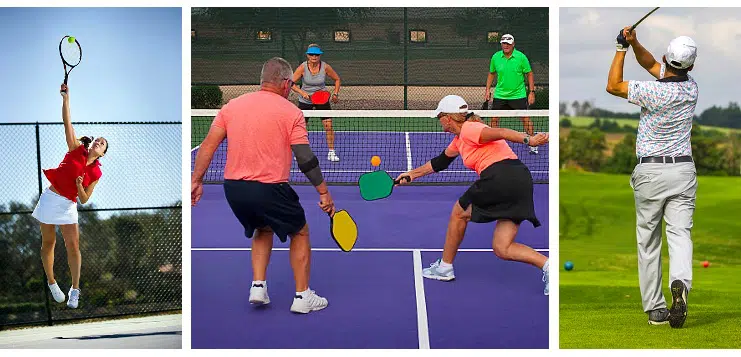We have lots of patients who come in with pain in their forearms that starts around the elbow and moves down the forearm. More often than not this pain either stems from lateral epicondylitis (commonly known as tennis or pickleball elbow) or medial epicondylitis (commonly known as golf elbow).
Medial epicondylitis is characterized by pain from the inside of the elbow to the wrist, caused by damage to the tendons that bend the wrist toward the palm. Golfers, baseball players and frequent travelers who carry heavy suitcases are those who tend to suffer with medial epicondylitis. Lateral epicondylitis is characterized by pain from the outside of the elbow to the wrist, caused by damage to the tendons that bend the wrist backward, away from the palm. These painful conditions result from overuse, strain and faulty body mechanics. Traditional recommended treatments include rest, ice, physical therapy and stretching, and can take months to a year to heal depending on severity.
Fortunately, treatment with acupuncture, electric stimulation and moxibustion (burning of mugwart root over the affected area) can dramatically speed up the healing process. Most patients make an 80-100% recovery in about fifteen treatments, depending on the severity of the inflammation and length of time the person has been suffering.
Fixing your body mechanics is key to preventing injury. Regardless of cause, make sure to stretch before you play sports. Reduce repetitive movements when possible, strengthen muscles with weights (and be sure to include opposing muscles) and use a brace to prevent keep the wrists straight and prevent overextension. Tennis players should make sure their rackets are the right weight and have good hand grips. Similarly, golfers should ensure their clubs are well-gripped and for some, lighter graphite clubs may be a better choice. For those who play pickleball (and it seems everyone is playing these days), “if you loosen your pickleball grip pressure and use more of your fingers to hold the pickleball paddle, you will help avoid pickleball elbow and the pain that comes with it. You will also find that you will have a softer touch with your pickleball paddle and more control over your shots on the pickleball court.” (thepickler.com)
Of course, if you’re in a pickle, come see us and we’ll help get you back in the game.

